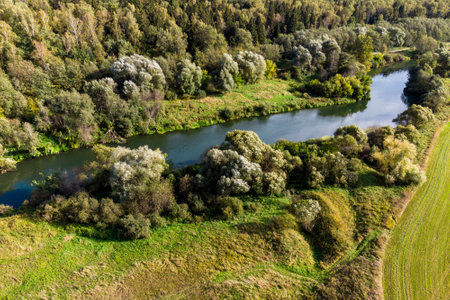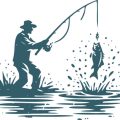Understanding the Impact of Invasive Species on British Waters
The health of British rivers, lakes, and coastal waters is under increasing threat from invasive non-native species. These organisms, introduced either accidentally or intentionally, often outcompete native species for resources, disrupt local food webs, and alter physical habitats. Understanding their impact is crucial for developing effective restoration projects across the UK.
Disruption of Native Ecosystems
Invasive species can quickly establish themselves in new environments due to a lack of natural predators. In British waters, this has led to significant ecological imbalance. For instance, the arrival of the American signal crayfish in English rivers has contributed to the decline of the native white-clawed crayfish by spreading disease and causing habitat destruction.
Case Studies: Local Impacts Across Water Bodies
| Area | Invasive Species | Impact on Native Ecosystem |
|---|---|---|
| Rivers (e.g., River Thames) | American Signal Crayfish | Erosion of riverbanks, predation on native crayfish, spread of crayfish plague |
| Lakes (e.g., Lake Windermere) | New Zealand Pigmyweed (Crassula helmsii) | Dense mats outcompete native plants, affecting fish spawning grounds |
| Coastal Areas (e.g., Solent Estuary) | Chinese Mitten Crab | Burdens flood defences, preys on native invertebrates |
Cultural and Economic Repercussions
The spread of invasive species does not only threaten biodiversity but also impacts recreational activities such as angling and boating, which are deeply rooted in British culture. Local economies reliant on these activities face losses when water quality declines or when fisheries collapse due to ecological changes.
The Need for Awareness and Action
Tackling the problem begins with raising awareness among communities and stakeholders about how invasive species enter and affect British waterways. This understanding lays the foundation for targeted restoration efforts, policy-making, and practical actions that can restore balance to these vital ecosystems.
2. Assessing the Damage: Gauging the Health of Affected Waterways
Restoring British waters after an invasive species incursion starts with a rigorous assessment of ecological health. British conservation teams rely on tried-and-tested methods to evaluate the impact and chart a course for recovery. Two principal approaches are water quality testing and biodiversity surveys, each offering essential insights into the state of affected waterways.
Water Quality Testing: The First Line of Defence
Water quality is a primary indicator of ecosystem health. In the UK, regular sampling is conducted across rivers, lakes, and reservoirs using standard parameters such as pH, dissolved oxygen, nutrient levels (including nitrates and phosphates), turbidity, and the presence of pollutants or toxins introduced by invasive species. The Environment Agency provides strict protocols ensuring consistency in data collection, which helps identify subtle changes following an invasion.
| Parameter | Purpose | Typical Method |
|---|---|---|
| pH | Assess acidity/alkalinity shifts due to invasives | Electronic meters or litmus strips |
| Dissolved Oxygen | Gauge habitat suitability for native fauna | Chemical titration or electronic probes |
| Nutrients (Nitrates/Phosphates) | Monitor eutrophication risk from invasive plants | Spectrophotometry kits |
| Turbidity | Determine sediment disturbance by invasives | Secchi disk readings or turbidity meters |
| Toxins/Pollutants | Detect chemicals released by invaders or control agents | Laboratory analysis of water samples |
Biodiversity Surveys: Taking Stock of Ecological Change
Biodiversity assessments are equally vital in understanding how invasive species alter aquatic communities. British practitioners conduct routine biological surveys that catalogue plant, invertebrate, and fish populations before and after incursions. Standardised kick sampling for macroinvertebrates and electrofishing for fish stocks are widely used techniques. These surveys help measure losses in native diversity and track the spread or decline of non-native organisms.
The Role of Citizen Science and Community Groups
A uniquely British approach involves mobilising local angling clubs, wildlife trusts, and citizen scientists to contribute observational data. These groups often spot early signs of trouble—such as unusual plant growth or declining fish catches—and feed information back to authorities. This grassroots involvement enables rapid response and builds public stewardship over restoration efforts.
From Data Collection to Restoration Planning
The information gathered through water quality testing and biodiversity monitoring forms the backbone of any restoration project. By comparing pre- and post-invasion data sets, ecologists can pinpoint critical areas requiring intervention, set realistic recovery targets, and monitor progress over time. This evidence-led strategy is central to effective rehabilitation of British waters post-invasion.

3. Community Involvement in Restoration Efforts
When it comes to rehabilitating British waters after invasive species incursions, the involvement of local communities is absolutely essential. Restoration projects often succeed or fail based on how well local organisations, angling clubs, and volunteers are mobilised. These groups not only provide hands-on support but also help raise awareness and educate the public about the ecological challenges facing British waterways.
The Role of Local Organisations
Local conservation groups and environmental charities act as key coordinators in aquatic restoration. They identify affected sites, secure funding, liaise with authorities like the Environment Agency, and facilitate collaboration between different stakeholders. Their deep understanding of regional ecosystems allows for tailored approaches that reflect local needs.
How Angling Clubs Contribute
Angling clubs have a unique connection to British waters—members are often among the first to spot changes caused by invasive species. Many clubs organise regular monitoring sessions, report new incursions, and participate in eradication activities. They also use their networks to spread information about biosecurity best practices, such as cleaning equipment to prevent the spread of non-native species.
Volunteer Engagement and Public Education
Volunteers play a crucial role by participating in habitat restoration days, monitoring water quality, and removing invasive plants. Public engagement events—like river clean-ups and educational workshops—help people understand how everyday actions can impact local ecosystems. Education campaigns often focus on:
| Activity | Purpose | Impact |
|---|---|---|
| Biosecurity Workshops | Teach cleaning protocols for boats and gear | Reduces spread of invasives |
| School Visits | Engage young people with native wildlife | Builds future stewards |
| Community Action Days | Hands-on removal of invasive species | Improves habitat quickly |
| Public Talks & Walks | Share knowledge about local waterway health | Keeps issues visible locally |
This collaborative approach not only strengthens restoration outcomes but also fosters a culture of stewardship across Britain’s diverse communities. By empowering residents and enthusiasts alike, these efforts ensure that aquatic environments remain resilient and vibrant for generations to come.
4. Practical Methods for Ecosystem Rehabilitation
Restoring British waters after invasive species incursions requires a blend of scientific insight and hands-on action. Here, we break down the main rehabilitation strategies applied in the UK, highlighting practical techniques and real-world examples.
Replanting Native Flora
One of the foundational steps is reintroducing native plant species. This not only helps to re-establish lost habitats but also stabilises food webs disrupted by invasives. For instance, in the Norfolk Broads, large-scale projects have focused on planting native reeds (Phragmites australis) and water lilies, which outcompete non-native plants like floating pennywort.
Benefits of Replanting Native Flora
| Technique | Target Area | Expected Outcome | Real-World Example |
|---|---|---|---|
| Reedbed Restoration | Wetlands, riverbanks | Erosion control, habitat recovery | Norfolk Broads Reedbed Project |
| Aquatic Planting | Lakes, slow-flow rivers | Biodiversity boost, algae reduction | Windermere Native Lily Initiative |
Bank Stabilisation Techniques
Erosion caused by invasive species such as signal crayfish can undermine banks and disrupt habitats. British restoration teams employ methods such as willow spiling (weaving live willow branches into riverbanks), coir rolls (biodegradable coconut fibre logs), and installing pre-planted mats. These approaches are favoured for their sustainability and minimal long-term impact.
Common Bank Stabilisation Methods in the UK
| Method | Description | Key Advantages |
|---|---|---|
| Willow Spiling | Live willows woven into banks to promote root growth and soil retention. | Culturally traditional, habitat creation, rapid establishment. |
| Coir Rolls | Coconut fibre rolls placed at the water’s edge to support new plant growth. | Biodegradable, excellent for marginal planting. |
| Pre-planted Mats | Mats seeded with native plants laid along eroded banks. | Immediate vegetation cover, reduces sediment loss. |
Removal of Invasive Species
The physical removal of invasive flora and fauna remains essential. Techniques vary from manual hand-pulling (used for Himalayan balsam) to large-scale electrofishing or trapping for invasive fish like the topmouth gudgeon. Coordination with local volunteers is crucial—projects along the River Thames rely on “Balsam Bashing” events where community members help clear affected areas.
Case Study: Floating Pennywort Removal in Cambridgeshire
The Cam Conservators led a collaborative effort involving mechanical weed harvesters and follow-up hand removal to eradicate floating pennywort. Monitoring is ongoing to ensure regrowth is swiftly managed, showcasing a successful integrated approach.
Tying It All Together: Integrated Approaches Work Best
No single method suffices; instead, combining these strategies maximises restoration success. By blending replanting, bank stabilisation, and vigilant removal of invasives—and engaging local communities—British waters are being steadily rehabilitated for future generations.
5. Monitoring and Long-Term Management Strategies
Ensuring the success of restoration projects in British waters following invasive species incursions requires robust monitoring systems and adaptive management approaches. In the UK, a range of frameworks and practices have been developed to safeguard waterways from re-invasion and to secure ongoing ecosystem recovery.
British Frameworks for Waterway Monitoring
The UK employs a combination of governmental initiatives, community-led efforts, and scientific tools to systematically monitor rivers, lakes, and wetlands. Key agencies such as the Environment Agency (EA), Scottish Environment Protection Agency (SEPA), and Natural Resources Wales (NRW) coordinate national-level surveillance, while local water groups and citizen scientists provide on-the-ground data collection. The integration of these resources ensures early detection of invasive species and rapid response capabilities.
| Framework/Programme | Main Function | Lead Organisation |
|---|---|---|
| Catchment Based Approach (CaBA) | Engages stakeholders for coordinated catchment monitoring & management | Environment Agency + Local Partnerships |
| Riverfly Partnership | Citizen science-based invertebrate monitoring for water quality & invaders | Angling Trust/Local Volunteers |
| Invasive Non-Native Species (INNS) Surveillance | Targeted surveillance for high-risk species using eDNA & field surveys | GB Non-Native Species Secretariat (NNSS) |
Adaptive Management Approaches
Adaptive management is central to long-term restoration in Britain. This approach involves setting clear ecological goals, conducting regular assessments, and adjusting management actions based on monitoring results. For example, if post-restoration surveys indicate a resurgence of invasive signal crayfish or floating pennywort, rapid intervention plans are enacted—ranging from physical removal to targeted biocontrol trials.
Key Steps in Adaptive Management Cycle
- Baseline Assessment: Document pre-restoration conditions and invasive threats.
- Implementation: Roll out agreed-upon control or restoration measures.
- Monitoring: Continuously collect data on biodiversity, water quality, and invasive presence.
- Evaluation: Analyse outcomes against benchmarks; identify gaps or new risks.
- Adjustment: Refine techniques or strategies as required; engage stakeholders for feedback.
Tackling Reinvasion Risks
Preventing reinvasion is a priority across all British waterway projects. Measures include stringent biosecurity protocols—such as Check, Clean, Dry campaigns for anglers and boaters—and the installation of barriers where appropriate. Education campaigns raise public awareness about the dangers posed by releasing aquarium plants or animals into local rivers.
Sustaining Ecosystem Recovery into the Future
The longevity of restored aquatic habitats depends on sustained funding, cross-sector collaboration, and the empowerment of local communities. By combining scientific rigour with community stewardship and policy support, Britain continues to develop best-practice models for resilient waterway ecosystems in the face of invasive species challenges.
6. Case Studies: Success Stories from Across the UK
England: The Norfolk Broads Revival
The Norfolk Broads, a renowned wetland in East Anglia, faced significant threats from invasive species such as the American signal crayfish and floating pennywort. Local authorities and conservation groups launched a coordinated restoration project focusing on mechanical removal, community-led monitoring, and reintroduction of native aquatic plants. This multi-pronged approach not only curbed invasive populations but also improved water quality and revived native biodiversity.
Key Outcomes for England
| Action | Result |
|---|---|
| Mechanical Removal | 70% reduction in invasive plant cover within 2 years |
| Native Species Reintroduction | Return of rare aquatic flora such as water violet |
| Community Engagement | Over 500 volunteers trained in biosecurity measures |
Scotland: Loch Lomond’s Mussel Management Programme
In Loch Lomond, invasive zebra mussels threatened to disrupt the delicate balance of the freshwater ecosystem. Scottish Natural Heritage collaborated with local angling clubs and landowners to implement stringent boat cleaning protocols and rapid response detection teams. Public awareness campaigns reinforced these efforts, leading to early detection and swift containment of new incursions.
Lessons Learned in Scotland:
- Proactive stakeholder engagement accelerates incident response.
- Continuous public education ensures long-term vigilance.
- Tailoring strategies to local recreational activities enhances compliance.
Wales: Restoring the River Usk’s Native Fish Populations
The River Usk suffered from competition with invasive non-native fish species, notably the topmouth gudgeon. Welsh Water and Natural Resources Wales partnered on a targeted eradication programme combined with habitat enhancements such as gravel bed restoration. These efforts helped boost native salmonid numbers while keeping invasive populations at bay.
| Initiative | Impact Noted (2021-2023) |
|---|---|
| Targeted Eradication Campaigns | Topmouth gudgeon population reduced by 85% |
| Habitat Restoration Works | Increase in spawning sites for Atlantic salmon and brown trout |
| Stakeholder Collaboration | Sustained monitoring by local angling groups |
Northern Ireland: Lough Neagh’s Community-Led Recovery Efforts
Lough Neagh experienced heavy infestations of curly waterweed and quagga mussels. The Lough Neagh Partnership spearheaded a community action plan involving farmers, fishers, and school groups in both manual removals and water testing initiatives. This grassroots model fostered a sense of ownership among locals, ensuring ongoing vigilance against future threats.
Northern Ireland’s Takeaways:
- Diverse partnerships amplify restoration impact.
- Youth engagement sustains long-term stewardship.
- Cultural heritage is protected alongside ecological goals.
Conclusion: Locally Adapted Solutions Drive National Progress
The UK’s diverse restoration projects illustrate that tailored responses—rooted in scientific best practice and shaped by local context—deliver meaningful outcomes. By learning from these success stories across England, Scotland, Wales, and Northern Ireland, practitioners can refine their own rehabilitation strategies to restore resilience to British waters post-invasion.


